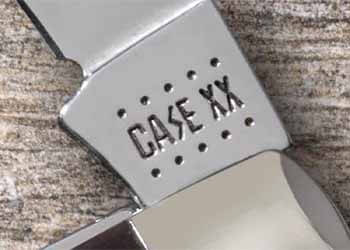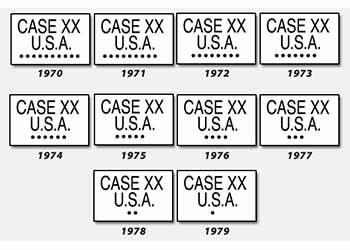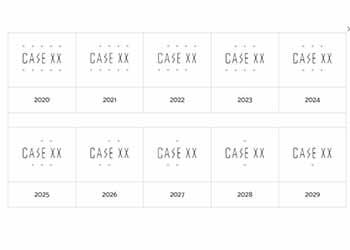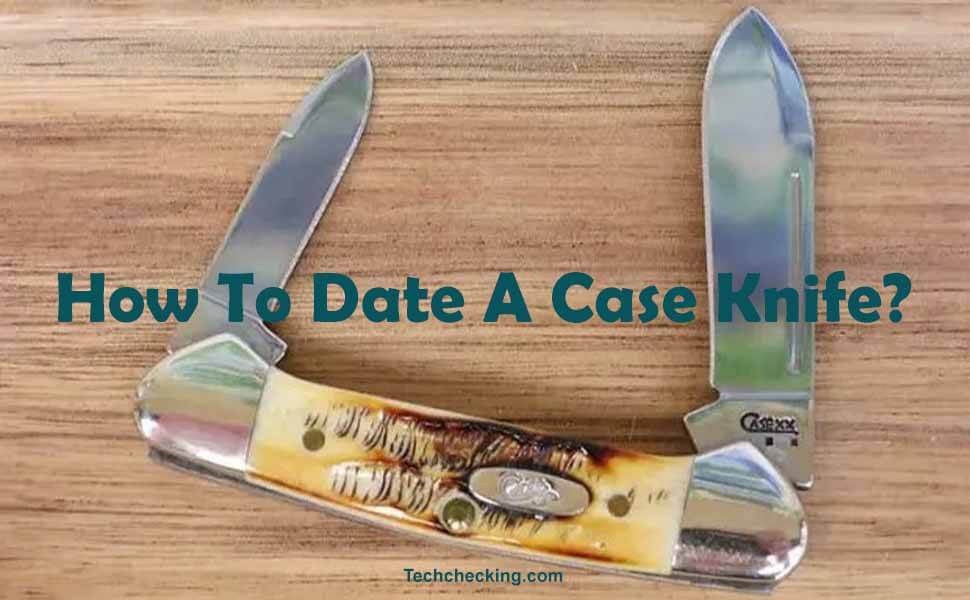Are you a collector or enthusiast of Case Knives and interested in knowing their age? If so, learning how to date a Case Knife can provide valuable insights into its history and value. Case Knives are renowned for their high-quality materials and craftsmanship, making them a sought-after item for knife collectors. By understanding the different parts of a Case Knife, including the tang stamp and pattern number, you can easily determine its age. In this article, we will provide you with a comprehensive guide on how to date a Case Knife, covering everything you need to know about identifying the age of these iconic knives.
How to Date a Case Knife?
The History of Case Knives

Case Knives have a long and illustrious history, dating back to 1889 when the company was founded by four brothers; William Russell, Jean, John, and Andrew Case. The brothers started the company in Little Valley, New York, where they produced high-quality knives using the best materials and craftsmanship.
In the early years, the company focused on producing knives for outdoor enthusiasts, farmers, and tradespeople. However, as their reputation for quality grew, so did their customer base. By the early 1900s, Case Knives were known throughout the United States for their durability and reliability.
In the decades that followed, Case Knives continued to evolve and innovate, introducing new materials and designs to their product line. During World War II, the company shifted its focus to producing knives for the military, contributing to the war effort with high-quality knives that were used by soldiers on the front lines.
In the years since, Case Knives have remained a beloved and respected brand, producing knives that are both functional and beautiful. From the classic Trapper and Stockman patterns to the sleek and modern designs of today, Case Knives have become a true icon in the world of cutlery.
Related Articles:
Understanding Case Knife Anatomy
To effectively date a Case Knife, it’s essential to understand its anatomy. A Case Knife consists of several distinct parts, each of which can help identify its age and history. Here are the primary components of a Case Knife:
- Blade: The blade is the most recognizable part of the knife and is used for cutting. Case Knives feature a range of blade shapes and sizes, each designed for a specific purpose.
- Handle: The handle is the part of the knife that is held during use. Case Knives have traditionally been made with high-quality materials such as bone, wood, and synthetic materials, each with its own unique properties.
- Bolsters: The bolsters are the metal pieces that sit between the blade and handle. They provide additional strength and stability to the knife and can be used to identify the age of the knife.
- Tang: The tang is the part of the blade that extends into the handle. Tangs on Case Knives are often stamped with information that can help identify the knife’s age.
By understanding each of these components, you can begin to identify the age of a Case Knife based on its unique features. Additionally, examining the condition of each part can also provide valuable insights into the knife’s history and usage.
Identifying Case Knife Age by Tang Stamps

One of the most reliable methods for dating a Case Knife is by examining the tang stamp. A tang stamp is a mark that is stamped onto the tang of the blade, usually near the handle. The tang stamp contains information about the knife, including the manufacturer, year of production, and sometimes even the location of the manufacturing plant. Here’s what to look for when identifying a Case Knife’s age by tang stamps:
- Identify the manufacturer’s name: The tang stamp will usually include the manufacturer’s name, which can be used to determine the age of the knife. For example, knives stamped with “W.R. Case & Sons” were produced before 1970, while those stamped with “Case XX” were made between 1945 and 1965.
- Look for additional markings: Some tang stamps may also include additional markings, such as pattern numbers or handle materials. These can provide further clues about the knife’s age.
- Compare the stamp to reference materials: There are several resources available, including books and online databases, that can help identify the age of a Case Knife based on its tang stamp. By comparing the stamp to these resources, you can narrow down the knife’s production date.
- Consider the knife’s overall condition: The condition of the knife can also provide valuable insights into its age. For example, knives with worn or faded tang stamps are likely older than those with sharp, clear stamps.
By examining the tang stamp and considering other factors such as the knife’s condition, you can begin to piece together the age and history of your Case Knife.
Identifying Case Knife Age by Pattern Numbers
In addition to tang stamps, pattern numbers can also be used to identify the age of a Case Knife. A pattern number is a code assigned to a specific knife design, and Case Knives have used a variety of pattern numbers over the years. Here’s what to look for when identifying a Case Knife’s age by pattern numbers:
- Identify the pattern number: The pattern number can usually be found on the tang stamp, but it may also be stamped on the blade itself. Once you have the pattern number, you can begin to narrow down the age of the knife.
- Use reference materials: There are several books and online resources available that provide information on Case Knife pattern numbers and their corresponding production dates. By comparing the pattern number to these resources, you can determine the age of the knife.
- Consider other factors: While pattern numbers can be a useful tool for dating a Case Knife, it’s important to consider other factors as well. The knife’s tang stamp, handle materials, and overall condition can all provide clues about its age and history.
- Be aware of variations: It’s worth noting that while pattern numbers can be a helpful tool for dating Case Knives, there can be variations within each pattern. Different production runs, changes in materials, and other factors can all affect the appearance of a knife and its corresponding pattern number.
By understanding the significance of pattern numbers and considering other factors, you can gain a deeper understanding of the age and history of your Case Knife.
Case Knife Dating Systems

To make it easier for collectors and enthusiasts to date their Case Knives, the company has used several different dating systems over the years. Here’s an overview of the most commonly used Case Knife dating systems:
- Pre-1970: Prior to 1970, Case Knives were stamped with the name “W.R. Case & Sons” along with an image of a tiny axe. The tang stamp also included the pattern number and a series of dots that indicated the year of production. The dots were arranged in a unique pattern for each year, making it possible to identify the production year by counting the dots.
- 1970-1989: In 1970, Case changed its name to Case XX and began stamping its knives with this new name. The tang stamp also included the pattern number and the last two digits of the year of production. For example, a knife stamped with “Case XX 78” was produced in 1978.
- 1990-1999: From 1990 to 1999, Case used a dating system that included ten dots, arranged in a pattern of five on top of five. The first digit of the year was represented by a dot in the center, while the second digit was represented by the number of dots to the right of the center dot.
- 2000-Present: Since 2000, Case has used a tang stamp that includes the pattern number, the Case logo, and the last two digits of the production year. In addition, the tang stamp may also include the location of the manufacturing plant.
By understanding the various dating systems used by Case over the years, you can more easily identify the age of your Case Knife based on its unique markings and features.
Additional Clues to Case Knife Age
In addition to tang stamps and pattern numbers, there are several other clues that can help you determine the age of a Case Knife. Here are a few additional factors to consider:
- Handle materials: The materials used to make the knife’s handle can provide clues about its age. For example, older knives may have handles made from materials like bone or stag, while newer knives may feature synthetic materials like Delrin or Zytel.
- Shield style: Case Knives feature a small shield on the handle that displays the Case logo. The design and style of this shield has changed over the years, so identifying the style of the shield on your knife can help you date it.
- Blade etchings: Many Case Knives feature etched designs or logos on the blade itself. These etchings can provide clues about the age and origin of the knife.
- Bolster style: The bolsters on a Case Knife are the metal pieces that separate the blade from the handle. Like the shield, the style and design of the bolsters have changed over the years and can help you date the knife.
- Condition: The overall condition of the knife can also provide clues about its age. A well-worn knife may be older than one that is in pristine condition.
By taking these additional factors into account, you can develop a more complete understanding of the age and history of your Case Knife.
Researching Case Knives
Researching Case Knives is an important part of identifying and dating these valuable collectibles. Here are some tips and resources to help you research your Case Knife:
- Case Knives website: The official Case Knives website provides a wealth of information about the company’s history, as well as tips for identifying and dating Case Knives. You can also browse their current selection of knives and learn about upcoming releases.
- Online forums: There are many online forums and discussion groups dedicated to collecting Case Knives. These forums can be a great resource for connecting with other collectors, asking questions, and sharing information.
- Knife books and price guides: There are many books and price guides available that are specifically focused on collecting and valuing Case Knives. These resources can provide valuable information about identifying and dating your knife, as well as its potential value.
- Antique stores and knife shows: If you are looking to purchase or sell a Case Knife, antique stores and knife shows can be a great resource. These venues often have knowledgeable dealers and collectors who can help you identify and value your knife.
- Online marketplaces: There are many online marketplaces where you can buy and sell Case Knives, such as eBay and Amazon. However, it is important to be cautious when purchasing knives online and to only buy from reputable sellers.
By utilizing these resources and taking the time to research your Case Knife, you can develop a deeper understanding of its history and value.
Evaluating Case Knives
Evaluating the condition of a Case Knife is an important part of determining its value and collectability. Here are some factors to consider when evaluating a Case Knife:
- Blade condition: The blade is the most important part of the knife and should be examined closely for any signs of damage or wear. Look for chips, nicks, or other damage to the blade edge, as well as any rust or discoloration.
- Handle condition: The handle of the knife should also be examined for any signs of damage or wear. Look for cracks or splits in the handle material, as well as any looseness or movement of the blade in the handle.
- Fitting and finish: The fitting and finish of the knife refers to the overall craftsmanship and attention to detail in its construction. Look for even spacing between the bolsters and handle material, as well as smooth and polished surfaces.
- Originality: Collectors value knives that are in their original, unaltered condition. Look for any signs of repair or replacement parts that may affect the knife’s originality.
- Rarity: The rarity of a particular Case Knife model or pattern can also affect its value. Knives that were only produced in limited quantities or for a short period of time may be more valuable than more common models.
By taking these factors into consideration and examining the knife closely, you can develop a better understanding of its condition and value. It is also important to seek the opinion of an experienced knife collector or appraiser to ensure that you are accurately assessing the knife’s worth.
Documenting Case Knives
Documenting your Case Knives is an important step in preserving their history and value. Here are some tips for properly documenting your knives:
- Take detailed photographs: High-quality photographs of your knife can be invaluable for documenting its condition and identifying any unique features or markings. Take photos of the blade, handle, tang stamp, pattern number, and any other identifying features.
- Keep a record of any provenance: If you know the history of your knife, such as where it was purchased or who owned it previously, be sure to document this information. It can add value and interest to your knife’s story.
- Record any modifications or repairs: If your knife has been modified or repaired, document these changes and note any impact they may have on the knife’s value or originality.
- Store your knife properly: Proper storage can help preserve your knife’s condition and prevent damage. Keep your knife in a dry, climate-controlled environment and avoid exposing it to extreme temperatures or moisture.
- Consider professional appraisal: If you are unsure of your knife’s value or want an expert opinion, consider having your knife professionally appraised. An appraiser can provide a detailed evaluation of your knife’s condition and value, which can be useful for insurance purposes or when buying or selling the knife.
By documenting your Case Knives and taking steps to preserve their condition, you can ensure that these valuable collectibles will continue to be appreciated for years to come.
Caring for Case Knives
Proper care and maintenance of your Case Knives can help ensure their longevity and preserve their value. Here are some tips for caring for your knives:
- Keep your knives clean and dry: After use, wipe your knife clean with a soft, dry cloth. Avoid using harsh detergents or abrasive cleaners that can damage the blade or handle material.
- Oil the blade: Applying a small amount of oil to the blade can help prevent rust and keep the blade functioning smoothly. Use a light, non-toxic oil such as mineral oil or gun oil, and wipe off any excess with a clean cloth.
- Store your knives properly: When not in use, store your knives in a dry, climate-controlled environment. Avoid storing them in leather sheaths, as the tannins in the leather can cause corrosion on the blade.
- Sharpen your knives carefully: When sharpening your knife, use a sharpening stone or other appropriate sharpening tool. Be careful to maintain the blade angle and avoid grinding away too much of the blade.
- Use your knives appropriately: Case Knives are designed for specific tasks and should be used accordingly. Avoid using your knives for tasks they are not designed for, such as prying or chopping hard materials.
By following these tips for caring for your Case Knives, you can help ensure that they remain in good condition and continue to be valuable and functional collectibles for years to come. Read more.
Final Words
In conclusion, Case Knives are more than just tools; they are treasured collectibles with a rich history and legacy. Dating a Case Knife can be a fascinating and rewarding experience, as it allows you to uncover the unique story behind each knife. Whether you are a collector or simply appreciate the quality craftsmanship and heritage of these knives, understanding the anatomy, age-dating systems, and other identifying features of Case Knives can help you appreciate their value and significance. By caring for and properly documenting your knives, you can ensure that they continue to be appreciated for generations to come. Whether used as tools or kept as heirlooms, Case Knives are a testament to the enduring legacy of American craftsmanship and innovation.
Image Credit: flickr

